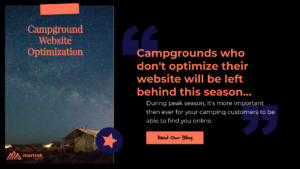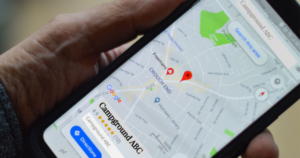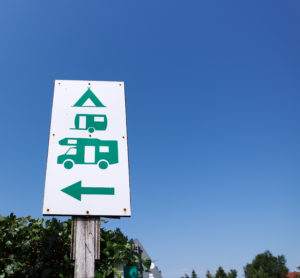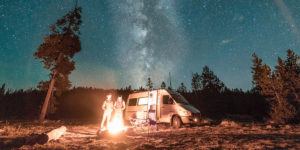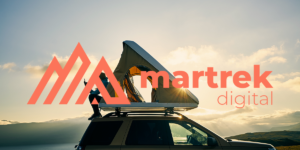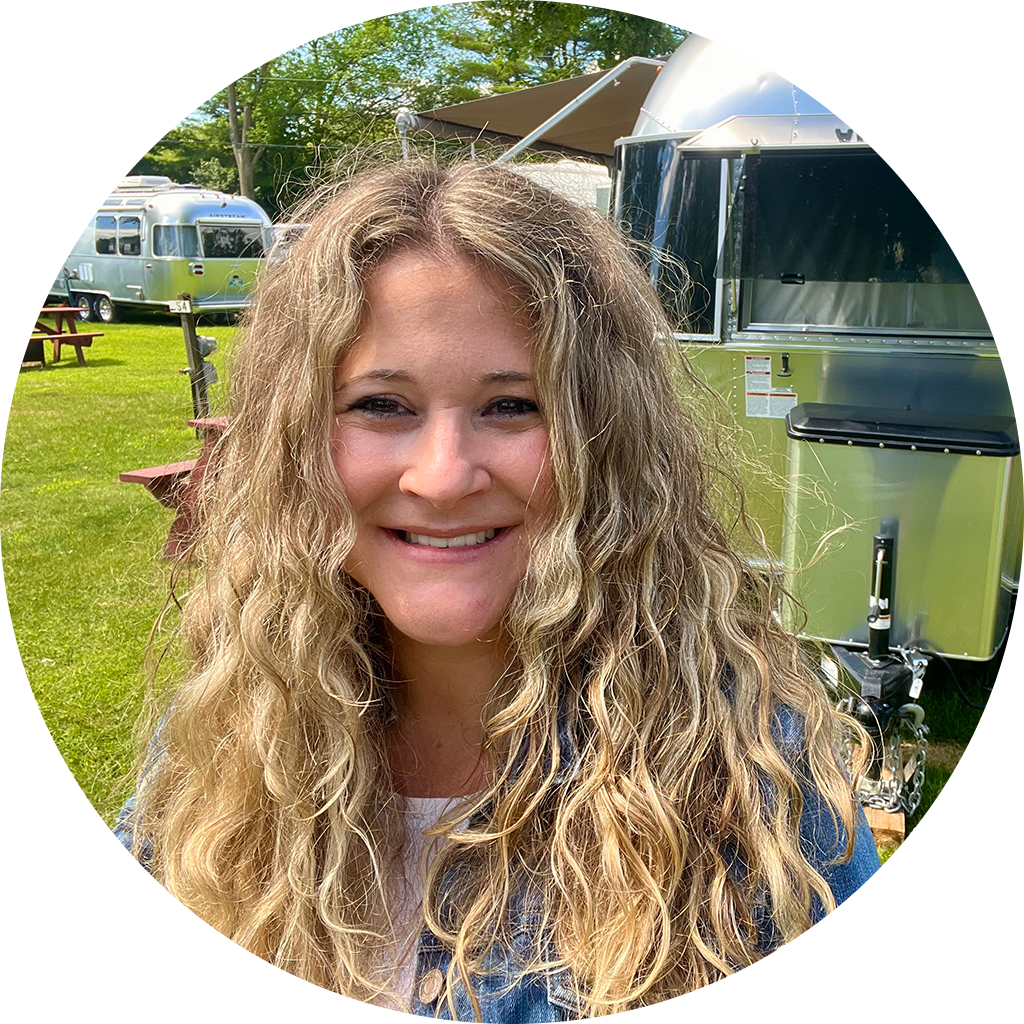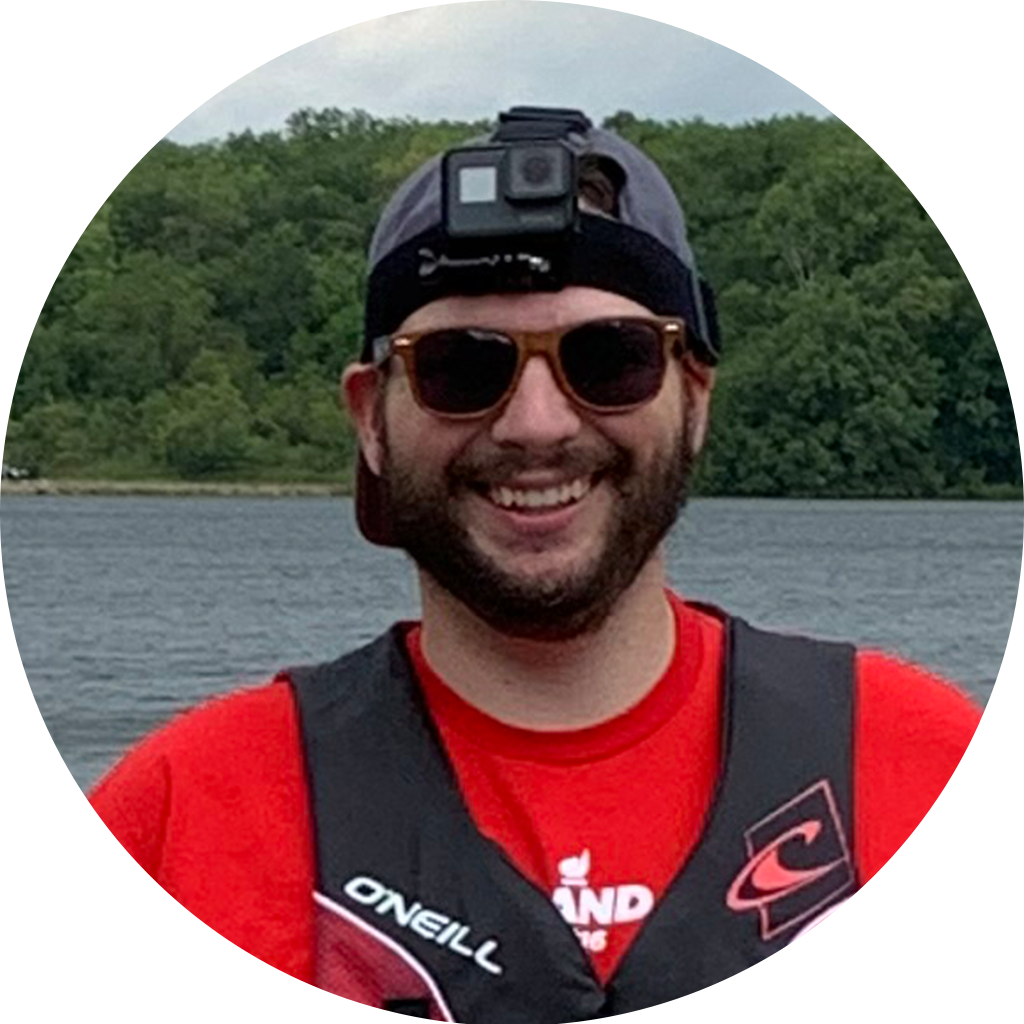Understanding who books or might book your campground, and how to keep them coming back.
Building and keeping what is called a “customer personas” for your campground or RV park, in my mind, is one of the most singular important things that you can do to reach your booking goals and fine-tune your campground marketing. After all, if you don’t know who you are trying to reach, you are going to have a really hard time tracking success and understanding why people are, or are not, choosing to book your park, in the first place. Campground marketing 101, right? For example, customer personas can help inform so many things: what apps to be on, how to push and develop content for your site and social channels, how to boost engagement while in your park, and what needs to be fixed or addressed in your current strategy or campground amenity list, and more. Here are some simple tips to find your campground customers where they are at.
First, let’s start with the basics. What is a Customer Persona?
A Customer Persona, also known as a Buyers Persona, or for this purpose, a Campground Persona, is an example of a fictional person or character built on real data from market research and purchase history. These individuals, or groups of individuals, are supposed to represent your ideal customer or customers.
Before starting the work, you need to answer a few questions. What are you trying to understand about potential and current customers? Do you have an ideal customer in mind? Do you have people or individuals that you know personally that you think about when you are thinking of your customer?
For instance, if you are a full or part-time living RV park, who is your ideal customer? Do you have restrictions on age or type of vehicle required for stay? What are the interests and core needs of this group while they are there? What types of amenities do you have on-site, or how does the location of your campground support these needs? What would motivate them to actually book with you? What types of technology would they be using and how would they find you when they are ready to book?
We did a lot of research when deciding to take the plunge and develop our Customer Personas, and it began first with the question: how are we going to use these Personas, who is our audience, and what makes sense for our end product? For example, let’s look at the sample RV Park below:
Simpson Family RV Park, Chicago Suburbs, Illinois*:
Goals: Decided that we are building these Campground Personas so that we can determine how to plan our SEO strategy and upcoming paid media campaign, and, we want to confirm that we are advertising our campground on the right mobile apps.
How we want to use Personas: We decide that we want to use these Personas to target our audience correctly on all of the above-mentioned strategies. We want it to be specific, clear, and actionable, and we want to be able to reference it over the next three years to determine if our segmentation and targeting are working, or if it needs any tweaks.
Now, we begin with Google. Based on our needs, what were some examples out there that already existed? What did the design look like, how were they created, and what was successful? I am a pretty visual person and knew that I was going to want to meet with a designer to bring my ideas to life. So, when I was out there in the market searching for my ideal final product, I created a Pinterest board with the versions that I liked – both the creative, the copy, and the layout, so that when it was time to pull together all of the details and work with my designer, they knew what I was looking for and what I wanted the final product to look like.
Some good resources that I found:
- blog.HubSpot.com (Instructions, basics of Personas)
- Marketing Insider Group (Instructions, basics of Personas)
- 99 Designs (Templates)
- Pinterest (Templates)
Final things we decided on for our Personas:
- (Fake) Names and Image: Note – this should NOT be a real customer that you know. This is important because often times when it is a real person, people using them get caught up in the real things they know about the person and are not able to focus on the customer they are trying to represent
-
- Demographics: Age, location, marital status, gender, and quote
- Goals and Motivations: Why are they looking for a campsite? What are their goals for long-term living, and what type of experience do they want to have?
- Social-Emotional Needs: What do they like to do for fun, and what are their dreams? How could this relate to the RV park that we have to offer?
- Challenges/Pain Points: Are they price sensitive? Do they have limitations with their trailer or RV that they will be looking to your site to provide (internet, bathrooms/shower house, laundry on-site, etc)?
- The technology they use: i.e. what platforms they are on, devices used, communication preferences, and technical needs – how savvy are they, and what are their expectations when interacting with our campground?
- Core Needs: Why do they need our campsite? This should be a list of possible reasons
- Relationship to Your Company: Have they camped here before? Are they loyal or are they someone on the fringe that you are trying to better understand and engage? Are they repeat customers? You get it.
- Key Products: What key amenities services do you have now, already, that would fit this Campground Persona?
- Areas of Opportunity: In this section, we put notes about where we needed to go with this key customer type, what we could do better, possible future amenities, their Net Promoter Score (NPS) score, etc.
How to Prep Camper Personas
These Campground Personas, depending on your resources, including staff time and budget, can be a huge lift, and take a long time. Or, they can be quick! Make sure that you understand the following things before you begin:
What is your budget?
This will drastically change what you are able to do, and how you are able to do it. Market research can be pricey. Make sure you have the support to be able to do this fully and right.
What is your timeline?
Again, depending on how much you need, research can take a long time. Make sure that you understand when these need to be delivered, and to whom, before you get started. It could change the list below and what you decide to execute is able to build these.
Who needs to sign off?
Do you have a board or group of executives that you need to see these in draft form before they are finalized? Who is the ultimate decision-maker(s) and how many iterations do you think you will need to build before these are ready for prime time?
How will they be implemented?
What do you plan on doing with them once they are finalized?
How to Build Camper Personas
Look internally at what you already have or already know
The first thing you should always do is look internally at what you already have or already know. If you are a seasoned campground, you might have past bookings or files of research or maybe previous customer personas that were built. Do you have market research, stakeholder interviews, focus groups, or findings that already exist that you could review? It doesn’t matter how old these are at this point, you are on a fact-finding mission and you need to understand what you already know. If you are a new campground, this might be looking more at your Mission and Vision Statement. Who is your ideal customer? Who do you want to attract to your campground and why?
Key internal stakeholder buy-in
Next, you need key internal stakeholder buy-in. Who are the decision-makers at the company and do they have insight into how this might be done and developed? If you produce these, will there be buy-in from all parties at the company so that you can launch this company-wide? The worst thing that you could do would be to create these in a vacuum, and then do all of this work to not have anyone use them. So frustrating as a marketer, but I can speak from experience. Figure out who those key people are and put together your formal recommendation and involve them in the process however you can. Be transparent, and share timelines, and strategy.
Look at your purchase history and data
What do you know about your customers already? If you are at a big campground or a chain, work with your IT or data/web teams to build some purchase history reports and abandon cart analysis from all campgrounds under your umbrella and then hone in on a specific location and see what that looks like in comparison. Figure out who is a repeat customer, who booked with you last year but not this year, who is consistently coming to your website and engaging in your posts on social media, but maybe not booking, etc. Do you use google analytics and UTM’s already? This data can be very telling. Especially if you have it pulled into a report already, like Google Dashboard or something internally developed like a Power BI report. You can understand who is coming to your site from where, for how long, and who finished the purchase pretty easily. You can also understand site traffic and where your customers are visiting, or not visiting. This will really help to understand who is already happy with what you offer and who might not be making the final sale.
Determine what is missing after assessment
What do you still need? This will inform the research that you need to launch, and ultimately, how costly that might be. Again, depending on the size of your campground and internal resources, there are ways that you could do this just with staff time, or you might have to find external companies or contractors that do this type of thing to assist the data you are still trying to collect.
Again, let’s look at our sample RV Park below and see how they approached this situation.
Simpson Family RV Park, Chicago Suburbs, Illinois:
Amenities and Technology Assessment
This was completed internally. We worked with all of our key leaders in Simpson Family RV Park operations and the owners team to get a full understanding of every single thing we offered. How much it cost, who it was available to, who the amenity or service was meant for, where it was located/product format (either electronically or physically depending on the product), if it was available to the public or if it was behind a paywall, etc. This included onsite things like bathrooms and shower house, internet, activities, wifi, hookups, golf cart rentals, physical location and proximity to external resources (highway, shopping, gas, pump stations, etc) but also our digital amenities: what apps we are on, our website, our social platforms, reviews, booking system, etc.
Focus Groups
We’ve been around for 50 years. After determining who we currently knew our customers to be based on the research that already existed, we launched online focus groups with our past customers, including some repeat customers, to better understand qualitatively what their needs were. This was where we were able to capture a majority of the answers to our more intangible questions that product purchase history couldn’t tell us (Social Emotional Needs, Challenges/Pain Points, Core Needs, Goals and Motivations, and even some of the Tech Questions).
Note: You can also do these in person. There are some great companies out there that have systems in place to launch these. Ours was over the course of 3 days and used a message board feature and it worked beautifully.
Benefits Assessment
Using the benefits that we had collected, we launched a Max-Diff survey to all of our current customers. We had a theory, additionally, that staff/ownership was not necessarily aligned with what our general customers wanted and needed. So, we additionally launched 1 other version of this survey – 1 internally to our staff, and 1 to our customers. We then did a data overlay to understand if these groups responded differently to the ranking and importance of the amenities and resources we offered. And, guess what, they did. Drastically. Note – you may not need this if you are a small campground/RV park operation. You can just talk to your staff and take notes, and see if it ends up being the same as what your data poll told you. If not, you know you have some work to do!
Post-Stay Survey
We did this already, so this was data we had just recently collected (outside of our budget for personas) that we could use right away for this project. It was also annual or per stay depending on the user, so we had a few years’ worth of data to analyze and understand. It is how we track our NPS score and understand how satisfied our current customers are with our campground.
Note: If you do not already have something like this, i.e., a post-stay survey, I would definitely recommend launching it for the Personas. It does not have to be huge, it should be as simple as 5 questions that take only a few minutes. Martrek can help with this!
Analyzing the Data:
This is the fun part. We had someone in-house that was able to aggregate all of the above data for us and help us work with the designer to bucket it all together into a nice package. It made it really easy to populate into our favorite template, and look at our Campground Personas in one big picture. You are almost there, and are well on your way to finding your campground customer.
Note: Depending on internal resources, this might be something that needs to be done by experts. Again, ask yourself, do you have internal resources like a Market Research Team that already has this skill set that can pull together all of the data and analysis for you? Or, is there a company (maybe the one that you hired to do the survey/research, ahem, Martrek) that could pull all of these things together for you?
The final outcome
Our campground Personas! We ended up with 3: Mary and Joe, the repeat customers, Roxy: the first-time customer, and Joe and Emily: the potential customers. We determined that our age group for all of our customers was a range of 35-75, either single or couples, that didn’t have kids and we’re looking for mostly long-term stays, averaging 3 to 6 months at a time. What did make the difference in age was the locations they were searching from and the time of year, which is important to know. For instance, our older couples were searching for us from the southern states, meaning they were what we call the “Snow Bunnies”, and were looking to stay with us long-term over the summer months, being in the midwest. These factors did not necessarily match up when we looked at our customers closer to 35. We had each persona laid out, with the details we were looking for each segment: Goals and Motivations, Social and Emotional Needs, Challenges/Pain Points, etc. This is what all of us at the park truly signed off on, and gave to your designer to create the final “product”.
What Formats to Choose From
Make sure you know your audience. And, that you understand your campground’s brand standards and guidelines. You shouldn’t, again, be building these in a vacuum. They should look like your current brand and be something that your internal stakeholders see and understand is representative of your campground. Remember, these Campground Personas are for internal use only, not something you are going to be putting out in front of customers in this way. You have to make sure that they are going to be used and understood.
Work with a designer that is familiar with a project like this, or that you can make sure to guide towards the outcome you are trying to achieve. Have some samples, or a Creative Brief ready to sit down with them and go over before you begin. Ask for a few (we usually choose 3) options of layout and design, and get weigh-in from your team. Have a Creative Review of the options before you decide on the final product that you want to go with and share with the team.
When I was ready to have our designer begin working on these, I shared the Pinterest Board I created and the brand colors and parameters that I was looking to use in the project. I also shared the Creative Brief to the project so that she had a lot to work with when she got the details of the project. This will help you not only get the profiles you want, but you will be well on your way to find your campground customers faster!
A few layouts I like:
Presenting to Your Stakeholders
In our example of the Simpson Family RV Park, their final presentation was to internal staff on the operations team and the park owners. Since this audience is the ones most likely to roll up their sleeves and do the work and implementation, they knew that they didn’t need all of the nitty gritty details, but that they needed enough to be able to understand the big picture items and the next steps. A presentation option for this type of crowd might be a PowerPoint format, about 25 slides with an appendix, that includes every step that was taken to come up with the Personas: what research was looked at internally, the research that was conducted to complement existing research with high-level results, the findings that were concluded, how they planned on using these moving forward, and then finally, the actual creative Campground Personas.
Important to note: regardless of who you are presenting to, make sure that your group doesn’t get caught up on the creative part, and instead, really focuses on the data (like the pain points, motivations, etc) that’s included in the Personas – i.e., who are our customers. For instance, how accurate were they already before this project began, where are you going to go now, and what are the future opportunities for the campground?
After approval, make sure to share these throughout the company, and keep them on the internal network drive so that anyone could access them when they need them.
Finally, make sure they get updated! This is not a one-and-done project. They can get out of date and old fast. The world is changing so rapidly, especially with technology and access. Make sure that you continue to update these every few years so that you don’t lose sight and can continue to find your campground customers, ensuring that you continue to personalize and improve the customer experience so that they keep coming back.
Was this helpful to you? We’d love to hear your feedback. Get in touch with us! We would love to support you and your campground marketing strategy.
*Note: Any information provided in the sample RV park examples is fictitious and for the purpose of showcasing how Campground Personas work only. Any similarities to real campgrounds are purely coincidental.





